Events Leading to the Establishment of the UNO:
Three monstrous wars, writes, Prof. Mangone, have led to three sane attempts to institutionalize peace by an international organization. The consuming struggle of Napoleon drove the world powers to consultation; the raw excesses of the First World War, which cost no less than 180 billion dollars and 10 million lives further impelled men and women to seek a system of collaboration against international violence, and out of the maw of the Second World War, more terrible than all the hecatombs of the past, came the plans for the United Nations.
The name “United Nations” was devised by President Franklin D. Roosevelt and was first used in the Declaration by the United Nations on 1st January 1942, when representatives of 16 nations pledged their Government to continue fighting together against the Axis powers.
The United Nations Charter was drawn up by the representatives of 50 countries at the United Nations Conference on international organisation, which met in San Francisco from 25 April to 26 June 1945. They deliberated on the basis of proposals worked out by representatives of China, the USSR, the United Kingdom and the United States at Dumbarton Oaks in August-October 1944. The Charter was signed on the 26th of June 1945. Poland, not represented at the Conference, signed it later and became one of the original 51 members states.
The United Nations officially came into existence on 24 October 1945, when the Charter had been ratified by China, France, the USSR, the United Kingdom and the United States, and by a majority of other signatories. The 24th of October is now universally celebrated as the United Nations Day.
The following are the important events and factors that led to the establishment of the United Nations-
(1) Atlantic Charter (1941)- On August 14, 1941, the great Atlantic Charter was signed by President Roosevelt and Prime Minister Sir Winston Churchill. The eight points of the Charter declared that all nations “for realistic as well as for spiritual reasons, must come to the abandonment of the use of force”. The Charter also declared that the general security of all nations was essential. The United States and Great Britain encouraged all measures which could curtail the armament race.
However, one can also find in this statement the doom of the League of Nations, since it contains no reference to the League. The question then arises as to what were the reasons for the decision to start all over again? According to Vandenbusch and Hogan, “First of all, there was the important psychological reason that it would be better to found a new organization than to try to revive one to which was attached the stigma of failure. The Covenant would in any case have to be revised; it might be less difficult to draft a new document than to modify the old one. President Roosevelt probably also believed that the American people would move freely and more enthusiastically join a new world organization than they would the League, about which there had centred one the most bitter political campaigns in American history. Moreover, the experience with the League had indicated that no security organisation could be effective unless all the Great powers were members of it. It was highly unlikely that the Soviet Union could be induced to rejoin the League, from which it had been expelled in 1939 for attacking Finland. In fact, Atlantic Charter was the first step towards the creation of the UNO.
(2) United Nations Declaration of January 1, 1942- After the first step in the creation of the UNO a significant document called the United Nations Declaration was signed on January 1, 1942, by Roosevelt, Churchill, Litvinove and Snong for their respective governments and by twenty-two governments on the following day. The signatories pledged to support the programme of purposes and principles embodied in the Atlantic Charter. The signatories also pledged to cooperate in their common struggle against their enemies until complete victory was won. Later on, this declaration was also signed by other states who had entered the war on the side of the Allied powers.
(3) The Casabianca Conference of January 1943- In the month of January 1943, Prime Minister Churchill and President Roosevelt met the French representative in the city of Casabianca to plan an invasion of Italy and Sicily. They agreed on a formula of “unconditional surrender” and talked over terms of peace. They also discussed the role of their respective countries in the post-war period.
(4) Moscow Declaration of October 30, 1943- The fourth step towards the establishment of the UNO was the Moscow Declaration which was signed on the 30th October 1943 by Molotov for the USSR, Eden for the U.K., Hull for the U.S.A. and Foo Ping-Sheung for China. These four great powers declared that they wanted that at the earliest a general international organisation based on Sovereign equality of all peace-loving states should be formed.
They agreed that they would consult with one another and as occasion required with other members of the United Nations with a view to joint action on behalf of the community of nations for the maintenance of international peace and security pending the re-establishment of law and order and the inauguration of a system of general security.
Prof. Vandenbosch and Hogan hold that reasons for “forming a new international organisation, were more specific than those of the Atlantic Charter, and it also definitely committed the Soviet Union to active co-operation in establishing security organisation”.
(5) The Tehran Conference December 1943- Shortly after the Moscow Conference, President Roosevelt, Prime Minister Churchill and Premier Stalin met at Tehran and in December 1943, they issued a joint statement declaring that the three great powers were determined to work together in war and in the peace that shall follow.
They further declared that they would seek the cooperation and active participation of all nations, large and small, whose people in heart and mind are dedicated, as are our own peoples to the elimination of tyranny and slavery, oppression and intolerance and that they would welcome them, as they may choose to come, into a world family of Democratic Nations.
(6) Bretton Woods Conference (July 1944)- After the Tehran Conference, the representatives of forty-four nations met at San Francisco on 21st July 1944, they drew up an agreement by which (1) the International Bank of Reconstruction and Development, and (2) the International Monetary Fund were established. Both these agencies are now functioning as specialized agencies of the United Nations.
(7) Dumbarton Oaks Proposals (25 Proposals) October 1944- The Dumbarton Oaks Conference was held in Washington from August 21, 1944, to October 7, 1944.
At Dumbarton Oaks, the main outlines of the proposed organization were drawn out and it was agreed that peace should be kept by collective action, by mediation or, if that failed, by force.
The agreement provided that all decisions on questions of procedure should be taken by a special majority of seven votes and that decisions on other questions should be taken by a like majority with the added requirement of unanimity of the permanent members.
(8) The Yalta Conference of February 1945- The question of voting procedure in the Security Council, which remained unsolved at Dumbarton Oaks was taken up at the Yalta Conference, held in February 1945.
At Yalta, the signal for the transition from planning to action was given when Roosevelt, Stalin and Churchill resolved on the earliest possible establishment of a general international security organisation, declared that the Dumbarton Oaks proposals laid the foundations for such a body, and announced that a United Nations Conference to prepare a charter of the proposed organisation would be held on Wednesday, 25th April 1945.
(9) Mexico City Conference (Feb, March 1945)- In February-March 1945 the representatives of twenty American republics met in Mexico. They discussed widely the questions relating to Inter-American defence and cooperation. They arrived at an understanding of the defence of America and prepared for the forthcoming San Francisco Conference.
(10) Committee of Jurist’s Meeting- The jurists of forty-four nations met at Washington in April 1945, they drew up a Draft Statute and Report. This was adopted with certain amendments as the Statue of the International Court of Justice.
(11) The San Francisco Conference of April 25- June 26, 1945- The Conference to draw up the Charter of the United Nations Organization (UNO) was held before the end of the fighting and the Charter was separated from the Peace settlement, necessary to liquidate World War II.
It was felt in 1945 that “statements of basic objectives were essential elements in securing the widest popular backing for the war effort, and that it would be better to unite for peace, while the ties of war alliance still were strong”. An agreement reached in time of war had a fair chance of being kept up in the time of peace. After the war, there might be bickering and dissensions which might render the task insuperable and even impossible. For Roosevelt, there was the lingering memory of Wilson’s tragedy and he, therefore, “felt it wise to secure the consent of the Congress of the United States to the establishment of a world organization before those domestic political differences, which tend to return so rapidly to all democratic countries after the close of a war, made an agreement on such a controversial subject less sure”.
The Conference opened on the 25th of April. “The delegates of 46 nations were all government representatives. The 850 delegates and their advisers, 1500 newspaper, radio and cameramen and 1200 public spectators streamed through the marble foyer to their seats and behind them, stretching far beyond the confines of the conference town and the American continent itself, was an endless sea of faces, the common people of all countries the world over”.
Stettinius opened the first session and at once came the voice of Truman, speaking by telephone line from the White House in Washington, through the loudspeaker with a joy-note call to the Conference to work in the spirit of Roosevelt who had died on April 12, 1945. “It is not the purpose of this Conference”, Truman declared, “to draft a treaty of peace in the old sense of that term. It is not our assignment to settle specific questions of territories, boundaries, citizenship and reparations. This Conference will devote its energies and its labours exclusively to the single problem of setting up the essential organization to keep the peace. You are to write the fundamental Charter…..We fully realize today that victory in war requires a mighty united effort. Victory in peace calls for and must receive, an equal effort. We were not isolated during the war. We dare not become isolated in peace. If we do not want to die together in war we must learn to live together in peace”.
The Conference worked through four Commissions- on General Provisions, the Assembly, the Security Council and the Judicial Organization. Each Commission set up committees on which every delegation was entitled to be represented, to provide technical consideration of sections of the proposed Charter, and prepare draft provisions for the Commission to pass on to the plenary session. The ground plan was the Dumbarton Oaks proposals and various delegations had suggested amendments totalling 400 pages which were collected into a single indexed volume by the Secretariat and copies were issued to each delegate.
On three issues bitter debate occurred in the conference (i) Veto power of the Big Five permanent members of the Security Council, (ii) the relationship of regional defence systems to the general organisation, and (iii) the plan for a trusteeship over areas inhabited by backward and dependent peoples.
(13) Signing of the Charter- The charter containing 10,000 words in 111 articles divided into 19 chapters was finally prepared in 5 official languages- English, French, Spanish, Russian and Chinese. The various Committees held about 400 meetings and the entire conference is reported to have used 500 tons of paper. The total cost to the UNO was estimated at £ 400,000. The last business session of the Conference was held on June 25, 1945.
On June 26, 1945, the signatories of the Charter established a “preparatory Commission of the United Nations in order to make provisional arrangements for the sessions of the General Assembly and the three Councils, the Establishment of the Secretariat, and the convening of the International Court of Justice”. The Commission was to consist of one representative of each Member Government and its functions were to be exercised between sessions by an Executive Committee of 14 members.
The last session of the League Assembly met at Geneva from April 8 to April 18, 1946, and it assented to the transfer of its assets to the UN. From April 19, 1946, the League of Nations ceased to exist.
To conclude we may say that the Charter was not merely an international treaty. “It was” as Goodrich and Simons have put it, “more than an organization, created to assist in achieving certain common purposes, on which all were agreed. It could not be regarded merely as a series of restrictive clauses and be expected to accomplish its purposes. It had to be capable of development and adaptation to changing circumstances”.
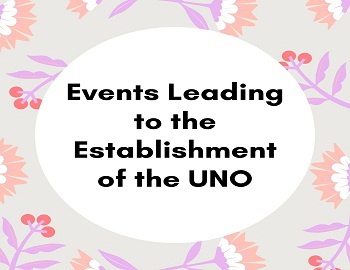

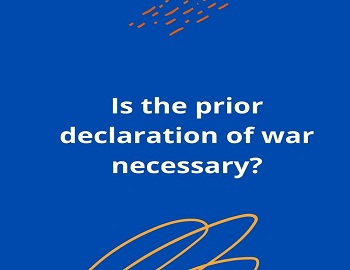
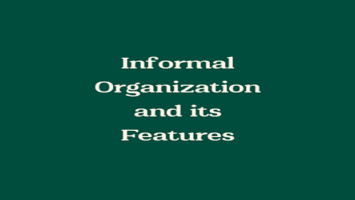

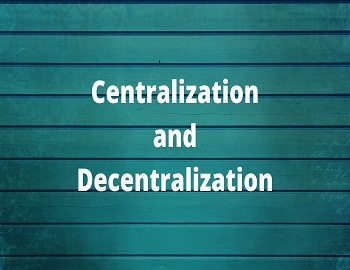

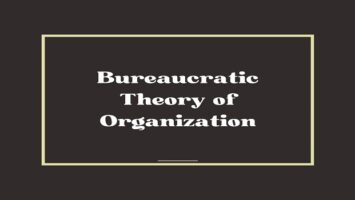

Comments (No)